Thanks 'MF':
On Donald Trump, "ancient enemies," and the Eisenhower Model ...
Premise: Donald Trump is returning us to the Eisenhower-Kennedy Timeline the Deep State (aka. the "enemy within") stole from us, and much of it has already been done.
Originally, my mind started tracing these paths because of the Nuclear Renaissance Trump's executive orders and economic actions have kickstarted, and that the Biden Admin (also known as the Devolution Admin) have only accelerated.
In short, this theory posits that the Nuclear nightmare that dominated the 1940s was being transformed into Nuclear optimism in the age of Eisenhower and Kennedy in the 1950s and early 60s, with both leaders envisioning an American unbound by energy constraints and overflowing with limitless potential.
There's a reason classic Americana nostalgia is strongest in the 1950s, and that's because it was the logical, manifest destiny technological and energy future we believed we were heading toward before decades of Military Industrial Complex war (not to mention a presidential assassination that effectively kicked it all off) ripped us sharply away from that brief era of optimism and sent us careening down a dark path that only a few bright spots (Reagan, Trump,) have managed to pull us out of in pockets.
That said, this post isn't inspired by the Nuclear Renaissance I believe (that I KNOW) is right around the corner during Trump 2.0, but rather by curious and frequent commentary Trump Admin officials are deploying based around the Commander-in-Chief and the US Chain of Command, concepts and structures that are essential to any plan to not just burn out the Deep State, but to make sure it never gets its hooks into the reforged American Republic again.
To wit, Kash Patel's recent comments on Donald Trump reinstituting "civilian control" over the US MIL and Department of Defense got my mind racing along the post-Eisenhower-Kennedy Timeline I've been thinking about for months.
In short, I believe Donald Trump, his admin, his priorities, his relationship/backing with US MIL, and the Devolution operation most exhaustively documented by represent an attempt to return the US to a constitutional, civilian-controlled sovereign state in keeping with the Eisenhower-Kennedy timeline, and that has been under siege (and losing,) since November 1963.
The energy stuff plays into this, but that's more far-reaching.
What we saw with the implementation of the Devolution Operation, and what has continued since, is a rapid shift AWAY from the very Military Industrial Complex Eisenhower first coined and disclosed to the American people (and that very likely played a role in killing his presidential heir, John F. Kennedy,) and back toward a civilian-controlled command structure, as first baked into the founders' vision for this nation.
As pointed out by , Kash recently said,
“When he [Trump] took away [Milley, Kelly, Esper’s] nest egg in the Defense Industrial Complex and he said ‘no, I, the Commander in Chief, run the Department of Defense under civilian authority as vested in me in the Constitution’, they got really ticked off.
And then he started looking into the corruption and saying ‘What’s all these million, billion dollar contracts- all your friends in DoD, and why does this revolving door keep opening and shutting? What happened to not having a politicized national command authority?’
HE EXPOSED IT ALL.”
Now, let's take a trip down memory lane to April 3, 1958, when the aforementioned General-President Dwight D. Eisenhower (who probably knows a BIT about the Chain of Command,) sent an open letter to US Congress entitled, "Special Message to the Congress on Reorganization of the Defense Establishment."
Now, isn't that interesting?
60+ years ago, Eisenhower was attempting to compel congress to act on the need Trump himself cited upon first taking office?
But here are some of the juicy bits from the letter (links will be in replies:)
After laying out the slow, steady corruption of the US Chain of Command, the over-complexity and compartmentalization of the increasingly-militarized executive branch and the lack of civilian oversight on the whole complex, Eisenhower says,
"These various steps toward more effective coordination of our armed forces under one civilian head have been necessary, sound, and in the direction pointed by the lessons of modern warfare. Each such step, however, has prompted opponents to predict dire results.
There have been allegations that our free institutions would be threatened by the influence of a military leader serving as the principal military adviser to the Defense Secretary and the Commander-in-Chief. There have been forecasts that one or more of the services would be abolished. As a result, the Secretary of Defense has never been freed of excessive statutory restraints.
As a result of well meaning attempts to protect traditional concepts and prerogatives, we have impaired civilian authority and denied ourselves a fully effective defense. We must cling no longer to statutory barriers that weaken executive action and civilian authority. We must free ourselves of emotional attachments to service systems of an era that is no more.
I therefore propose, for America's safety, that we now modernize our defense establishment and make it efficient enough and flexible enough to enable it to meet the fateful challenge of continuing revolutionary change."
And how about this ...
"We must clear command channels so that orders will proceed directly to unified commands from the Commander-in-Chief and Secretary of Defense.
The number of headquarters between the Commander-in-Chief and the commander of each unified command must be kept at the very minimum. Every additional level courts delay, confusion of authority, and diffusion of responsibility. When military responsibility is unclear, civilian control is uncertain."
He's talking ALL about the Chain of Command, the lack of civilian oversight, and the slow, steady erosion of constitutional checks and balances over the kinetic power projection arm of what had quickly emerged as the most powerful empire in the world in the aftermath of WW2 and the devastation of Europe and Russia.
Remember, he saw this firsthand, and developed a perspective that is, to this day wholly unique in terms of being a General in a World War who then ascended into the highest CIVILIAN office in the land.
Now, let's fast forward to John F. Kennedy, who, among MANY of the greatest and most signal-focused speeches ever delivered to the American people, continued to bang Eisenhower's drum in terms of civilian oversight, while apparently recognizing that the machine had already grown too robust and complex to take head-on.
His solution?
A focus on Special Operations unites and irregular/unconventional warfare.
To wit, as documented in Herold's Devolution Series, and as signal boosted by Ezra Cohen-Watnick, Kash Patel, Christopher C. Miller and others in Trump's COG orbit, Kennedy foresaw,
"... another type of war, new in its intensity, ANCIENT IN ITS ORIGIN, that would require a whole new kind of strategy, a wholly different kind of force, forces which are too unconventional to be called conventional forces, which are growing in number and importance and significance."
In Cohen-Watnick's words,
"Kennedy gave these remarks at the opening of the nuclear age ..."
(Note: there's that "nuclear age" term, again. And yet ... after Kennedy's assassination, America rapidly abandoned said nuclear age ... and retreated into generations of fossil fuel stagnation.)
Back to Ezra ...
"Kennedy gave these remarks at the opening of the nuclear age ... when the Pentagon was primarily organized to plan and direct large conventional operations against superpowers, not special operations short of overt declared conflict."
This is a section Herold highlights in his research, drawing a direct line between Ezra's invocation of Kennedy to the exact sort of "enemy" that might provoke a sitting president to implement, in the words of Christopher C. Miller, "some of the most complex military operations ever conducted."
Remember, Miller, the very brief, acting Secretary of Defense in the waning days of the Trump Administration, made these remarks after having spent mere weeks, not years working in said position, and overseeing what Mike Pompeo quite memetically referred to as, "A smooth transition [of power] ... into a second Trump Administration.]
Back to Ezra ...
"The global demand for Special Operations Forces, then and now, has confirmed President Kennedy's foresight."
And for the kicker:
"And now, under the leadership of President Trump, we are fully realizing President Kennedy's prescient view of Special Operations Forces."
Back to today ... Kash is telling you those forces are under civilian control and authority, JUST as Eisenhower wanted them to be.
This might put Trump's frequent references to the "Eisenhower Model" of mass deportation and, more importantly, counter-insurgency in different lighting for you.
MUCH more encouraging lighting, I hope ... as long as you're not a Deep State cabalist.
It also might expand your horizons on why the System of Systems, from the Military and Clandestine to the Narrative/Media and Political are quaking in their boots over the prospect of a Trump Admin with the full, express CIVILIAN mandate of the American people ... something Trump has been signal boosting lately with his calls for a "Mandate Election" this time around.
So, in my view, we've got a bit of a Presidential Hegelian Dialectic going here, with the Eisenhower-Kennedy-Trump trinity.
Eisenhower called out the problem ...
Kennedy reacted to it, and started drafting a solution ...
Trump, backed by the MIL, enters the stage in the endgame to implement said solution.
We've been told that we're in a war that's been waged in the shadows for decades, generations ... perhaps centuries or longer.
In the scheme of things, 1958 isn't too far away.
Donald Trump isn't simply a throwback to the legacies of Dwight D. Eisenhower and John F. Kennedy.
He's a continuation of their work.
And we'll help him see it done.
(Links to relevant reading and research in replies.)
CNN:
New-wave reactor technology could kick-start a nuclear renaissance — and the US is banking on it
By Angela Dewan, Ella Nilsen and Lou Robinson, CNN
Updated 2:38 PM EDT, Fri April 26, 2024
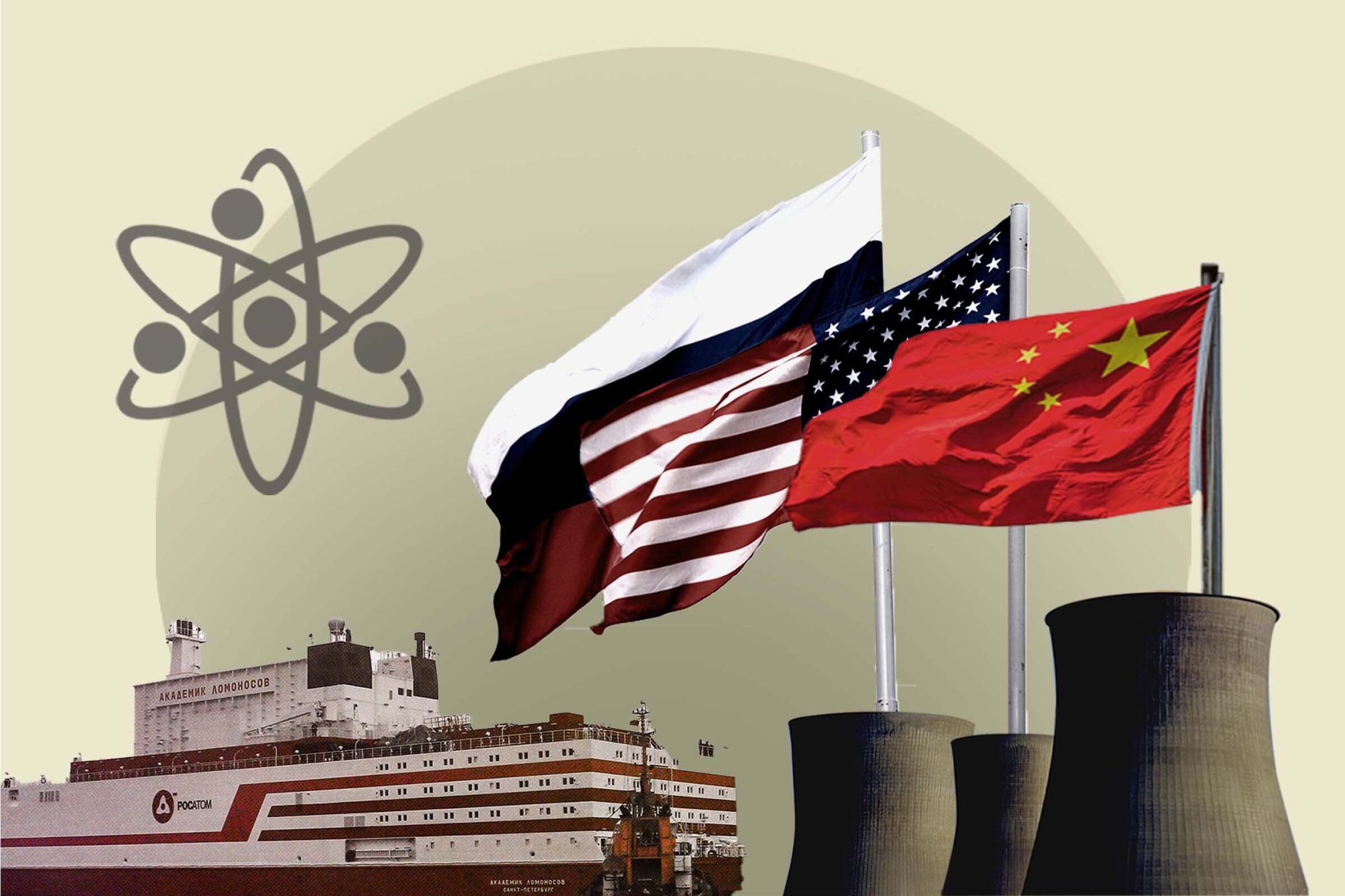
Photo-illustration: CNN/Getty Images/Maxim Shemetov/Reuters
Off the Siberian coast, not far from Alaska, a Russian ship has been docked at port for four years. The Akademik Lomonosov, the world’s first floating nuclear power plant, sends energy to around 200,000 people on land using next-wave nuclear technology: small modular reactors.
This technology is also being used below sea level. Dozens of US submarines lurking in the depths of the world’s oceans are propelled by SMRs, as the compact reactors are known.
SMRs — which are smaller and less costly to build than traditional, large-scale reactors — are fast becoming the next great hope for a nuclear renaissance as the world scrambles to cut fossil fuels. And the US, Russia and China are battling for dominance to build and sell them.
The Biden administration and American companies are plowing billions of dollars into SMRs in a bid for business and global influence. China is leading in nuclear technology and construction, and Russia is making almost all the world’s SMR fuel. The US is playing catch-up on both.
There’s no mystery behind why the US wants in on the market. It already lost the wind and solar energy race to China, which now provides most of the world’s solar panels and wind turbines. The big problem: The US hasn’t managed to get an SMR working commercially on land.
Updated 2:38 PM EDT, Fri April 26, 2024

Photo-illustration: CNN/Getty Images/Maxim Shemetov/Reuters
Off the Siberian coast, not far from Alaska, a Russian ship has been docked at port for four years. The Akademik Lomonosov, the world’s first floating nuclear power plant, sends energy to around 200,000 people on land using next-wave nuclear technology: small modular reactors.
This technology is also being used below sea level. Dozens of US submarines lurking in the depths of the world’s oceans are propelled by SMRs, as the compact reactors are known.
SMRs — which are smaller and less costly to build than traditional, large-scale reactors — are fast becoming the next great hope for a nuclear renaissance as the world scrambles to cut fossil fuels. And the US, Russia and China are battling for dominance to build and sell them.
The Biden administration and American companies are plowing billions of dollars into SMRs in a bid for business and global influence. China is leading in nuclear technology and construction, and Russia is making almost all the world’s SMR fuel. The US is playing catch-up on both.
There’s no mystery behind why the US wants in on the market. It already lost the wind and solar energy race to China, which now provides most of the world’s solar panels and wind turbines. The big problem: The US hasn’t managed to get an SMR working commercially on land.
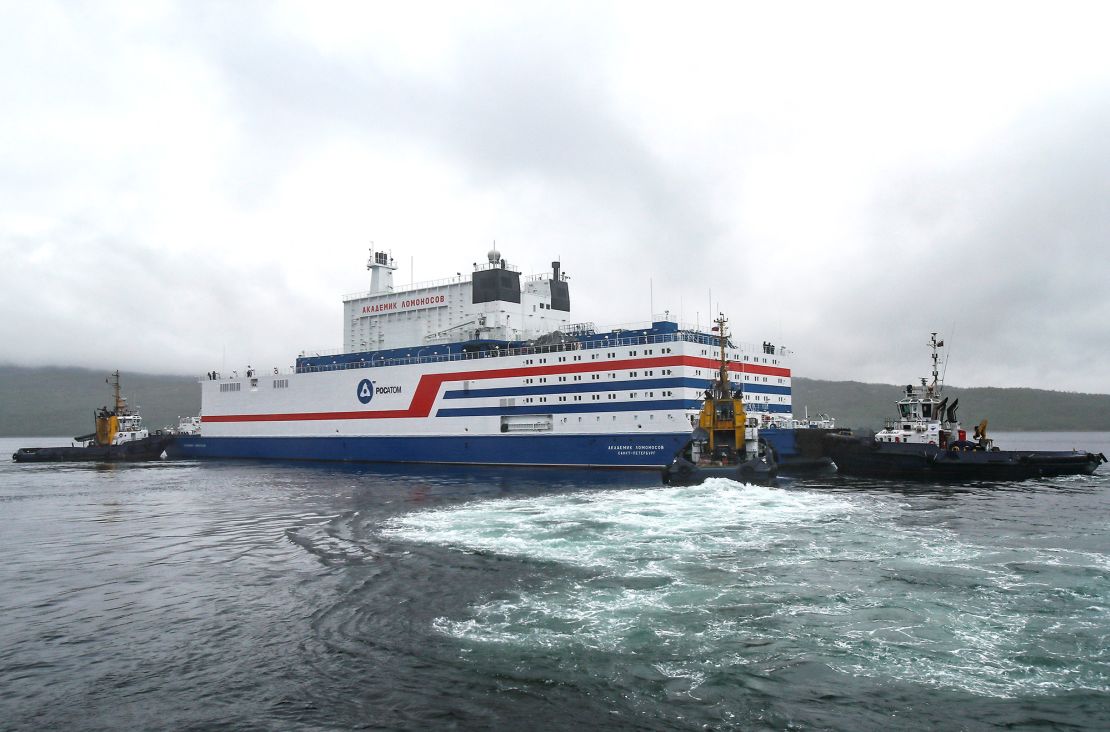
Russia's floating nuclear power plant, Akademik Lomonosov, leaving the service base Rosatomflot on August 23, 2019. Maxim Shemetov/Reuters
SMRs are potentially an enormous global market that could bring money and jobs to the US, which is trying to sell entire fleets of reactors to countries, rather than the bespoke, large-scale power plants that notoriously go over budget and way past deadline.
While SMRs provide less energy — typically a third of a traditional plant — they require less space and can be built in more places. They are made up of small parts that can be easily delivered and assembled on site, like a nuclear plant flatpack.
Most countries are trying to rapidly decarbonize their energy systems to address the climate crisis. Wind and solar now provide at least 12% of the world’s power, and in some places, like the European Union, they provide more than fossil fuels. But there’s an increasing sense of urgency to clean up our energy systems as extreme weather events wreak havoc on the planet and as challenges with renewables remain.
For some experts, nuclear energy — in all forms, large or small — has an important role to play in that transition. The International Energy Agency, which outlined what many experts say is the world’s most realistic plan to decarbonize, sees a need to more than double nuclear energy by 2050.
“There’s definitely a huge race on,” said Josh Freed, who leads the Climate and Energy Program at the think tank Third Way. “China and Russia have more agreements to build all sorts of reactors overseas than the US does. That’s what the US needs to catch up on.”
US targets Russia’s and China’s neighbors
The US is trying to sell SMR technology to countries that have never used nuclear power in their histories. To convince them that SMRs are a good option, they’ll need to pitch hard on safety.
Globally, the construction of conventional nuclear power plants dipped following the Chernobyl meltdown in 1986, and fell again after Japan’s Fukushima disaster in 2011, data from the World Nuclear Industry Status Report shows. They started to tick up soon after, but new projects were heavily concentrated in China.
Most of the world has been cold on nuclear for the past decade or so.
But a nuclear renaissance is coming, the IEA says. The organization predicts nuclear power generation globally will reach an all-time high in 2025. That’s because several traditional nuclear plants in Japan that were put on pause after Fukushima will soon be restarted, and new reactors in China, India, South Korea and Europe will start operating.
It seems that decades-old fears over the safety of nuclear are starting to fade, and people — or their governments at least — are weighing the benefits against the risks, including the problem of storing radioactive waste, which can remain dangerous for thousands of years. That could create a more hospitable market for countries looking to export SMRs.
If SMRs help boost the popularity of nuclear energy, they could become a powerful way to address climate change. Nuclear power, generally, doesn’t emit planet-warming carbon pollution when used and generates more energy per square meter of land use than any fossil fuel or renewable, according to an analysis by Our World in Data.
At the COP28 climate talks in Dubai in December, the US led a pledge to triple the world’s nuclear energy capacity, which 25 nations have now signed onto. And the US government has earmarked $72 million to its international SMR program, known as FIRST, to provide countries with a whole suite of tools — from workshops to engineering and feasibility studies — to provide them with everything they need to buy an SMR fleet made in America.
But bigger money is coming in the form of loans from state financial institutions, like the US Export-Import Bank and its International Development Finance Corporation, which have offered up $3 billion and $1 billion, respectively. Those have gone to two SMRs in Poland designed by GE Hitachi Nuclear Energy, a US-Japanese partnership headquartered in North Carolina.
The US and American companies are also finding success in Southeast Asia — a region where many countries are seeking to loosen their ties with China — as well as central and eastern Europe, where some nations that depend on Russian gas are trying to cut their reliance on Vladimir Putin’s increasingly hostile nation.
These efforts could threaten Russia’s ambitions abroad. Russia has already built or designed nuclear plants — the traditional type — for China, India, Bangladesh, Turkey, Slovakia, Egypt and Iran. Russia is also courting countries with the Akademik Lomonosov in Siberia: The CEO of Russia’s state-owned nuclear company said last year that dozens of countries had expressed interest in Russian-made floating SMRs.
Russia has another edge: its state nuclear company supplies almost all the world’s demand for SMR fuel — enriched uranium known as HALEU.
But the US and UK, among others, are investing in their own fuel production at home. That’s essential — two SMR demonstration projects, one by X-energy in Texas and another by Bill Gates’ TerraPower in Wyoming, were awarded government support to get up and running by 2028. They will need fuel to do so.
China isn’t building many nuclear plants abroad but as the only country to have an SMR in operation on land, it’s in a good position to win a large share of the market.
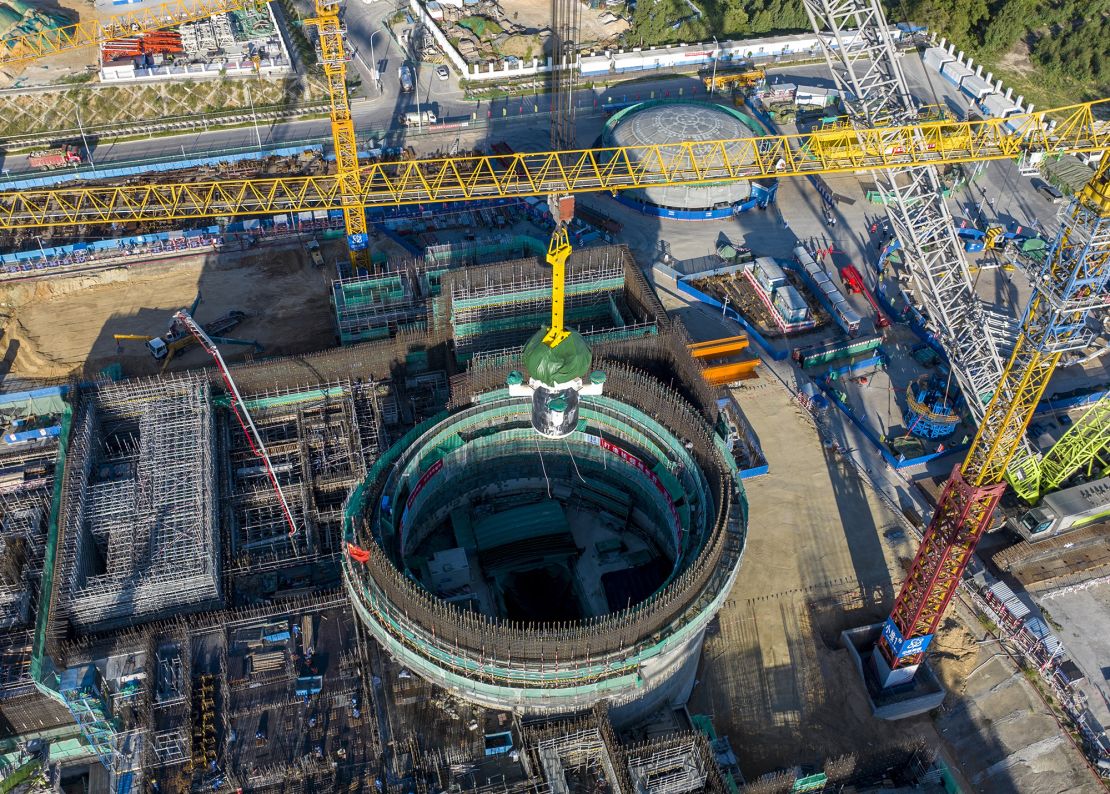
An aerial view of the core module of China's Linglong One, the world's first commercial SMR, installed on August 10, 2023 in Changjiang Li Autonomous County in Hainan province. Luo Yunfei/China News Service/VCG/Getty Images
It’s very difficult for American nuclear energy companies to compete with those from countries like Russia and China, which have state-run utilities that don’t have to prove their power is economical.
“Our nuclear vendors are competing against cheap, natural gas in the US,” said Kirsten Cutler, a Senior Strategist for Nuclear Energy Innovation at the US State Department. “Abroad, they’re competing against authoritarian-backed entities who are throwing in a lot of political pressure and package deals.”
But Cutler points out that nuclear deals create decades-long relationships with other countries that require trust and benefit from stability.
“Who are you going to have that relationship with? Countries recognize the risks of working with authoritarian-backed suppliers and seek partners that will strengthen their independence and their energy security,” Cutler said. “These are not trivial decisions. They’re really important 50 to 100-year decisions, and they seek the United States.”
Flexing diplomatic muscle
If the US intends to prove it can deliver an SMR, it’s not unreasonable to expect the technology to be economically viable — something the country is struggling to show.
In 2020, Oregon-based NuScale’s SMR design was the first in the country to win regulatory approval. But it announced in November 2023 it was pulling the plug on an Idaho-based demonstration project that could have ushered in the next wave of SMRs. Its costs had nearly doubled, which meant the project wouldn’t have been able to generate power at a price people would pay.
Much like large-scale nuclear plants, NuScale’s primary issue was high costs, as already expensive building supplies converged with tight supply chains, inflation and high interest rates.
It was a major blow to the argument that SMRs would be cheaper and faster to build than traditional reactors.
“It certainly dampens the excitement abroad,” said John Parsons, a senior lecturer at MIT and a financial economist focused on nuclear energy. “It makes a big difference in the marketing if the US is out there making it happen. Then people who are interested in nuclear have an easier case in their country.”
In a November statement, NuScale expressed confidence it could keep and find other customers for its power domestically and abroad.
The US is trying to flex its muscle in diplomatic circles to win this race, too.
US climate envoy John Kerry was among the most vocal supporters of nuclear energy at the COP28 climate summit. And according to an analysis by climate consultancy InfluenceMap, the US was the only foreign country to lobby the European Union to include nuclear power in its official list of energy sources the bloc considers “green,” and therefore eligible for central funding. The State Department said it does not comment on diplomatic activities when asked to confirm its lobbying.
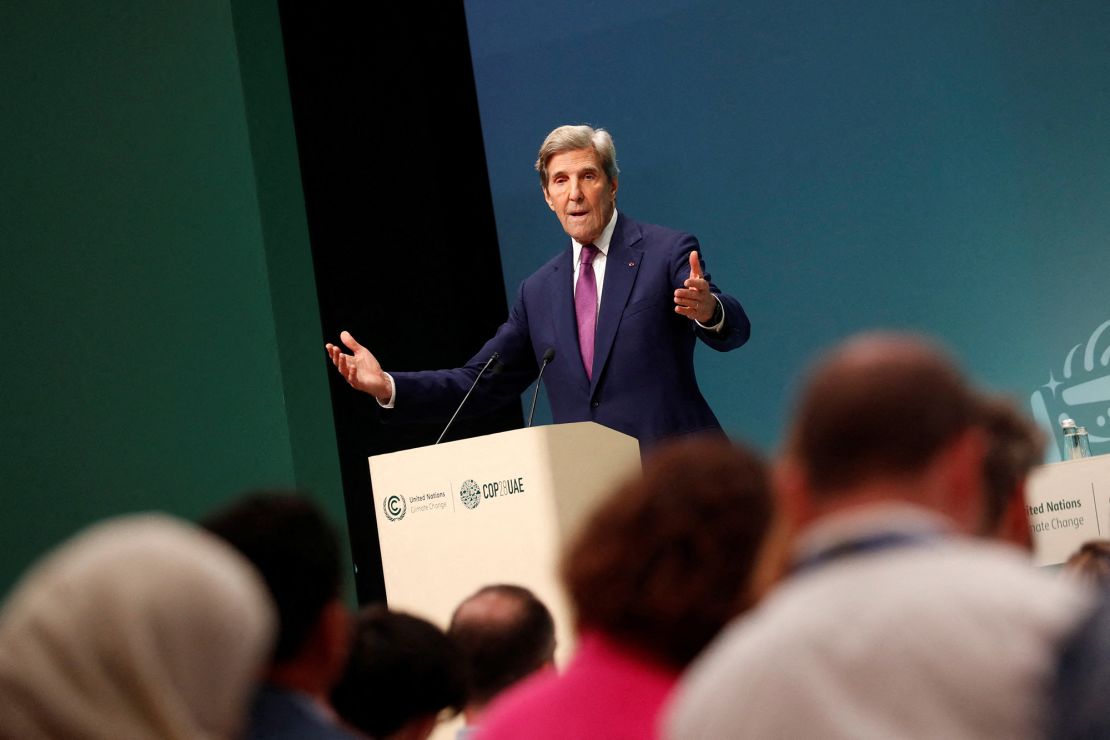
US Special Presidential Envoy for Climate John Kerry at the COP28 climate conference in Dubai, United Arab Emirates, on December 6, 2023. Thomas Mukoya/Reuters
While the US nuclear industry struggles with budgets and timelines, its rigorous approach to projects may have some payoff.
European allies, for example, trust the US’ Nuclear Regulatory Commission, particularly on safety standards, the Third Way’s Freed said. If an SMR is licensed by the NRC and built in the US, then it “gets the gold seal” of approval from other countries, he added.
But if the US wants to really make nuclear energy from SMRs more economically viable, it will have to take a look at its fossil fuel production.
“The target here is to produce electricity cheaper than coal and gas plants,” Parsons said. These fossil fuel plants are “terribly simple and cheap to run — they’re just dirty,” he added.
Even if there can be a dramatic takeoff in the US’ SMR industry, it will still take years to scale up. It will probably take until the end of this decade to even glean whether it’s viable, said Mohammed Hamdaoui, vice president of renewables and power at research firm Rystad Energy.
And that’s a problem — the scientific consensus is that the world needs to make deep sustained cuts to carbon pollution this decade to ward off catastrophic climate change.
“I don’t see it being a big player in the energy mix until the second part of the next decade,” Hamdaoui said. “It’s going to take time.”
Correction: A previous version of this story misidentified where X-energy intends to demonstrate its SMR. It is Texas. This story has been updated.

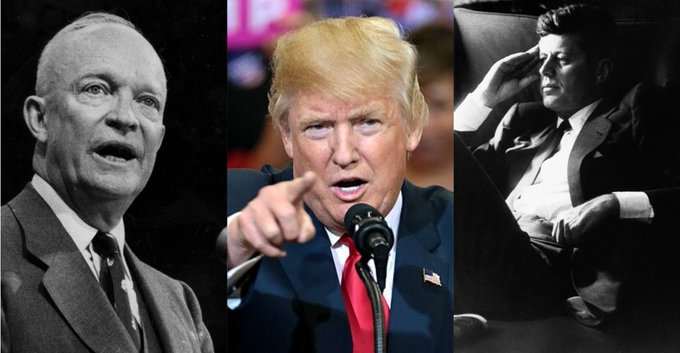

Russia's edge is as the creator of Chernobyl.
ReplyDeleteWakakaka…
DeleteWhere is Chernobyl?
Just about the time when Esper, the then Secretary of Defence, under Trump 1.0 was unceremoniusly kickout from his office, not long before the 2020 Election, and replaced by temp former Navy SEAL operator, the gang of board of advisors, the likes of Albright, Kissinger et al were sent packing as well. Will attached any link if can find back, after this long ago...
ReplyDeleteAnd Germany will be kicking themselves silly for closing down their last nuclear reactor this year I believe in chasing green energy castle in the air...
ReplyDeleteSign?
ReplyDelete~~~~~
https://x.com/SprinterFamily/status/1849907555348382108?t=xOVwSzKfUColGmrvgekGxw&s=19
🇺🇸The US Federal Reserve emblem fell off and fell down at the moment of the phrase about the dollar as the world's reserve currency
https://x.com/NickelCandyNews/status/1849909993119629449?t=WRqj_GVpX4ggTupWjxB37g&s=19
They say, God does have a sense of humor
Tracking cyper message over public space, after anons 7 years of training, in realtime?
ReplyDelete~~~~~
https://x.com/RealAbs1776/status/1850035920734462106?t=dh8_5sVzCPf3phJQaKYMiw&s=19
Scavino posted at 12:34.
Drop 1234: “America will be unified again”.
Drop 97 is a Nov 5th Delta.
It mentions “10 Days”.
Methinks it’s time to buckle up. 👀
I recently and casually asked a Sabah Electricty engineer if they would be using nuclear as power generation. Sabah energy exclude nuclear due to concern on contamination.
ReplyDeleteTNB used to have two or three floors dedicated to possible use of nuclear in MY fuel policy in Dua Sentral in Brickfield. I think the group has been minimized already.
Tukartiub will cried ahpaaa and ahmaa if MY consider it, which we did but who is going to host it...perhaps we will have a long way to go following Fukushima, Chernobyl, 3 Miles Island, Nagasaki and Hiroshima...
Not sure am any better but if end result cheaper electricity, why not if a case for its safety can be made.
Nuclear energy is like "fire", a good servant BUT a bad master. What many fear is not so much the consequences of nuclear energy per se (it's just another form of fire) but the notorious Malaysian maintenance
Delete